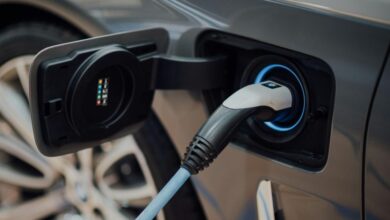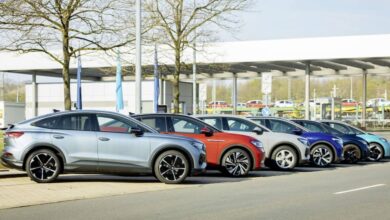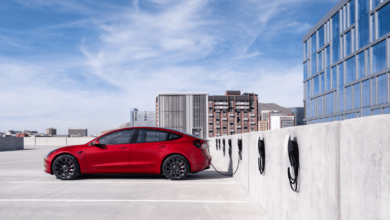This All-Electric Land Rover Defender Restomod Makes Off-Roading Surprisingly Easy

Founded in 2009 and based in the U.K., Bedeo is little known outside the world of commercial vehicles. Yet as an official parts supplier to Stellantis (the automotive empire behind Chrysler, Alfa Romeo, Dodge, Peugeot, Opel, Maserati, and more), it plays an important role in the manufacture of electrified vans that deliver many of Europe’s parcels and groceries—with the technology proven over 40 million miles and counting. Now Bedeo wants to channel those learnings into a new range of “Reborn Electric Icons.”
Bedeo’s first such restomod is a Defender converted to battery power. Nothing unusual there, you might think, companies such as Everrati and E.C.D. Automotive Design have been electrifying these vehicles for years. Yet this hard-worked and slightly scruffy 2005 Land Rover conceals some innovative new technology. Bedeo claims it’s the world’s first classic car with in-wheel electric motors.
More from Robb Report
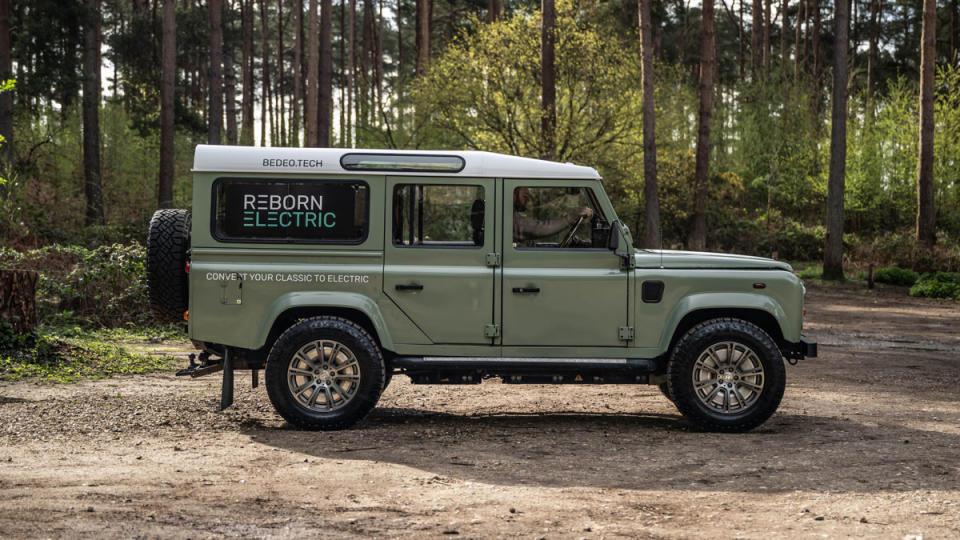
Instead of the factory-fit TD5 diesel engine, Bedeo has installed a 75 kWh battery and four compact hub motors. Housed within the 18-inch wheels, each motor develops 82 hp and 479 ft lbs of torque, although electronics limit output to less than half that so as not to overwhelm the Defender’s chassis. Performance matches the easygoing original (zero to 60 mph in 10 seconds and a top speed of 80 mph), while range is a modest 153 miles. However, the big advantages of in-wheel motors are packaging, weight, and ease of installation. And as I’ll discover, they can also perform some clever torque-vectoring tricks, too.
The Defender was chosen as a starting point because of its increasing value and the relatively high number still on the road. Future Bedeo projects could include the Porsche 911 and Mercedes-Benz G-Wagen, though the firm says possible applications for in-wheel motors are almost limitless.


As an EV-focused engineering company, Bedeo won’t be taking on conversions itself. Its plan is to recruit a network of approved installers, including ones in the U.S., then supply the parts—hence this Defender being more a working prototype than a fully formed restomod. Andrew Whitehead, CEO of Protean Electric, which is the division of Bedeo that specializes in electric motors, explains that it could be the first step in preserving and updating many older vehicles using in-wheel EV tech. Bedeo, though, hasn’t quoted a retail price for its conversion; that will need to come from the installer.
Whitehead walks me around the company’s workshops in Farnham, an hour from London, where motors are tested to destruction using dynamometers, G-force rigs, temperature and humidity chambers, salt-spray machines, and more. “We test every component to OEM [Original Equipment Manufacturer] standard, which means it has to last 15 years and 186,000 miles,” he explains.
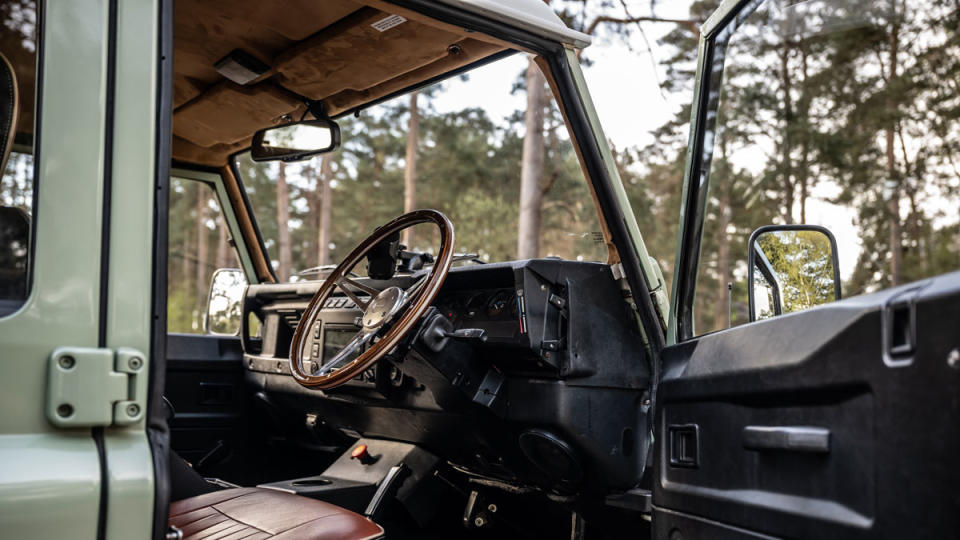

This Defender went electric with 120,000 miles on its odometer, and it has covered a further 11,500 miles since—many in the hands of Bedeo founder Osman Boynor, who uses it as his daily driver. The vehicle’s Grasmere Green paint bears a few battle scars and its sides are spattered with mud. Yet apart from EV-signifying green flashes on its U.K. license plates, there’s little else on the outside to suggest it’s electric.
Clamber inside, though, and you’ll find a few clues. The Defender’s rudimentary dashboard and cramped driving position are almost unchanged, but its angled shifter and stubby low-range lever are missing from the center console. They have been replaced by a push-button panel for Drive, Reverse, Park, and Eco mode, the latter of which adjusts the level of regenerative braking. The fuel gauge is also swapped for a battery-charge indicator, while a digital screen within the rearview mirror (borrowed from Bedeo’s electric vans) shows energy use and the remaining range.
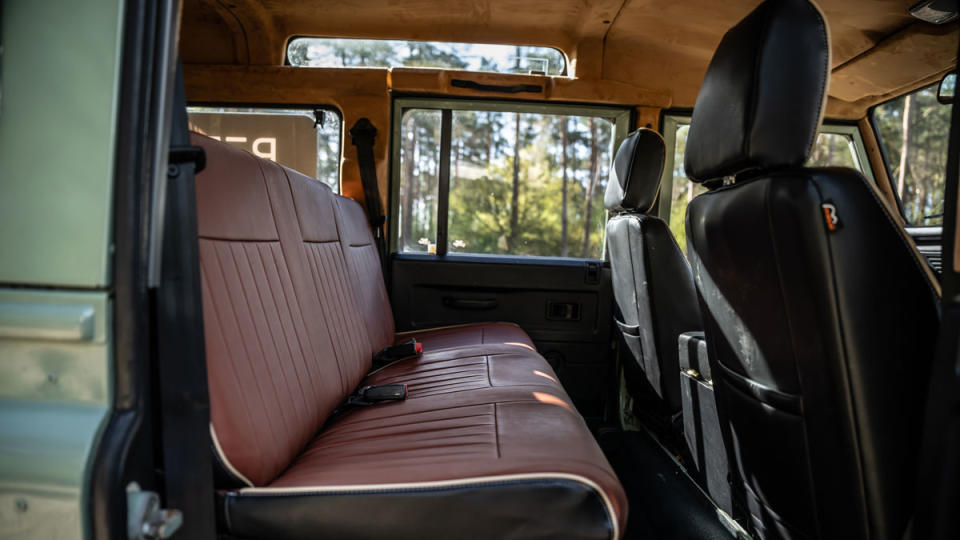

Unlike some converted EVs, the Bedeo’s drivetrain doesn’t encroach on interior space. In a classic Defender 110, that means a full complement of nine seats, with up to four passengers on the rear side benches (later cars had seven forward-facing seats). The circular permanent magnet motors—which incorporate a rotor and stator—and Bedeo’s custom braking system are tucked inside the wheels, with the batteries bolted beneath the floor. This results in a small decrease in ground clearance.
Many EVs are also significantly heavier than their equivalent combustion cars, but the Bedeo prototype, with each in-wheel motor tipping the scales at about 85 pounds each, is claimed to weigh about the same as a stock-version Defender fit with a diesel engine, driveshafts, and a manual transmission. And in a car with only two driven wheels, the in-wheel EV could potentially be lighter.
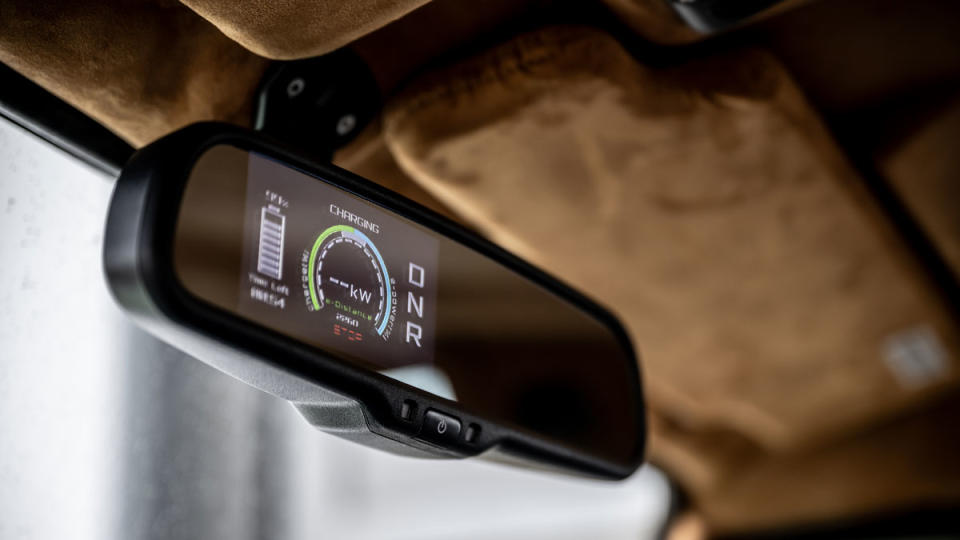

Venturing out into lunchtime traffic, I find that the smoothness and silence of the electric motors seems odd at first, but I soon appreciate their calming effect. Unlike, say, the wailing flat-six in a Porsche 911, Land Rover’s rattly TD5 engine can be removed without lobotomizing the car’s character. The downside, of course, is a need for regular charging stops on longer journeys (either 22 kW AC or up to 50 kW DC), particularly for U.S. drivers with more miles to cover.
In standard EV style, this Defender is utterly straightforward to drive, with instant torque, linear acceleration, and no gearbox or clutch to worry about. In full Eco mode, the level of regen feels similar to that of a Tesla, so you can negotiate urban traffic without touching the brake pedal.
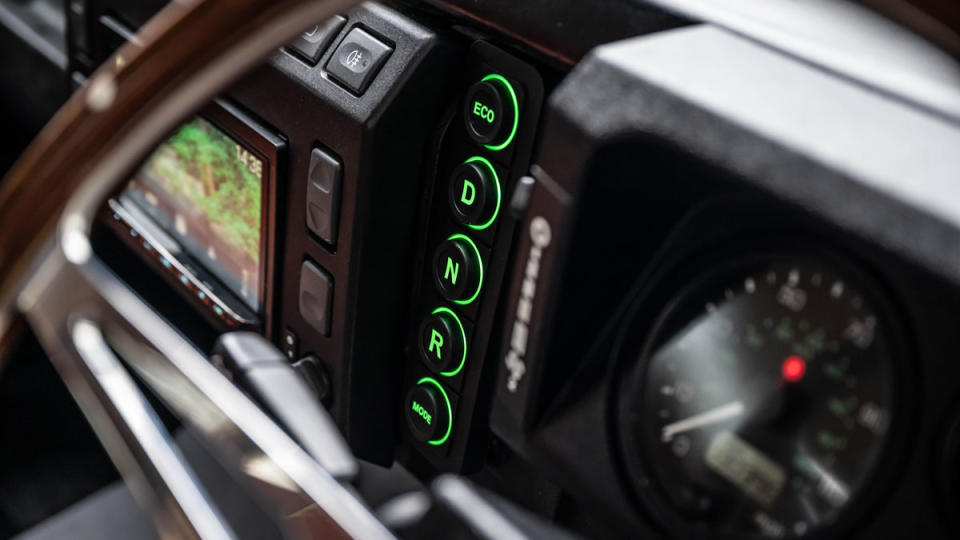

The motors might be quiet, but all-terrain tires paired with aerodynamic styling (or lack of) dating back to 1948 do turn up the volume with speed. On country roads, this reimagined Defender still demands broad-shouldered steering inputs and a certain degree of forward planning. “We could have given it 500 hp like some of the more extreme restomods,” says Whitehead, “but we wanted a level of performance that was suited to the car.”
The Bedeo carries some additional unsprung weight, although that is countered to some degree by a lower center of gravity. Its handling feels authentically incompetent—you still bounce over bumps and brace yourself for the body-roll. There is less to keep your limbs busy and your brain engaged than inside the original. A layer of mechanical interaction has been lost, which means some of the original model’s charm has as well.
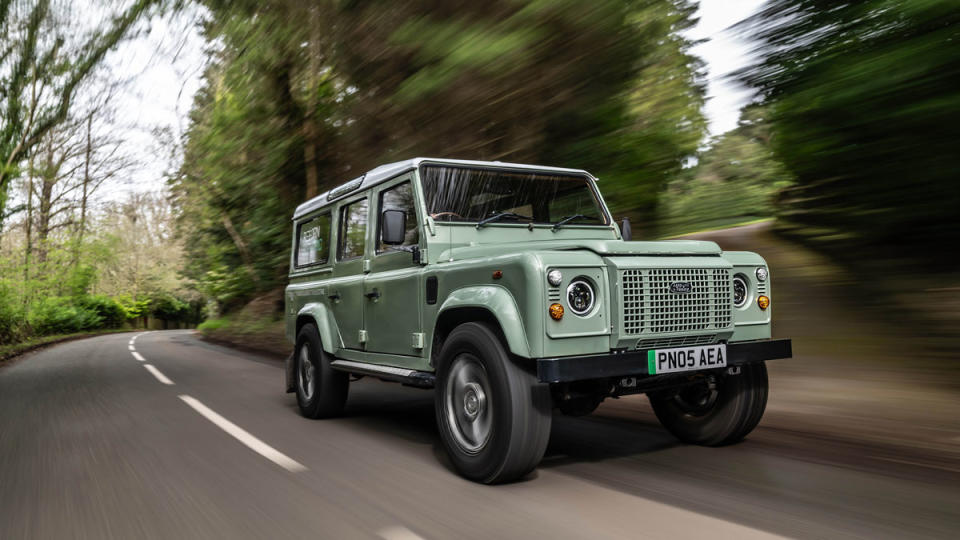

Speaking of authenticity, my route concludes with a green lane: the local term for an unsurfaced road with a public right of way. It’s exactly the kind of narrow, boggy track that British farmers traverse every day, and provides a test for Bedeo’s anti-slip system, which directs torque to the wheels with the most grip. In a traditional Defender, you’d need to clunk the lever into low-range and lock the differential, but the in-wheel motors do all the work for you. They make off-road driving incredibly easy—again, perhaps too easy for Defender purists.
Scrambling and slithering through ancient woodland, the electric Defender exhibits a quietness that seems to be a real boon. It doesn’t disturb or pollute its surroundings, encouraging goodwill from walkers, equestrians, and others on the green lane. And everyone loves a classic Land Rover. Whether in-wheel motors would work so effectively in a sports car, such as a Porsche 911, is another question, but we’re fascinated to find out.
Click here for more photos of Bedeo’s all-electric 2005 Land Rover Defender 110 Restomod.
Best of Robb Report
Sign up for Robb Report’s Newsletter. For the latest news, follow us on Facebook, Twitter, and Instagram.


